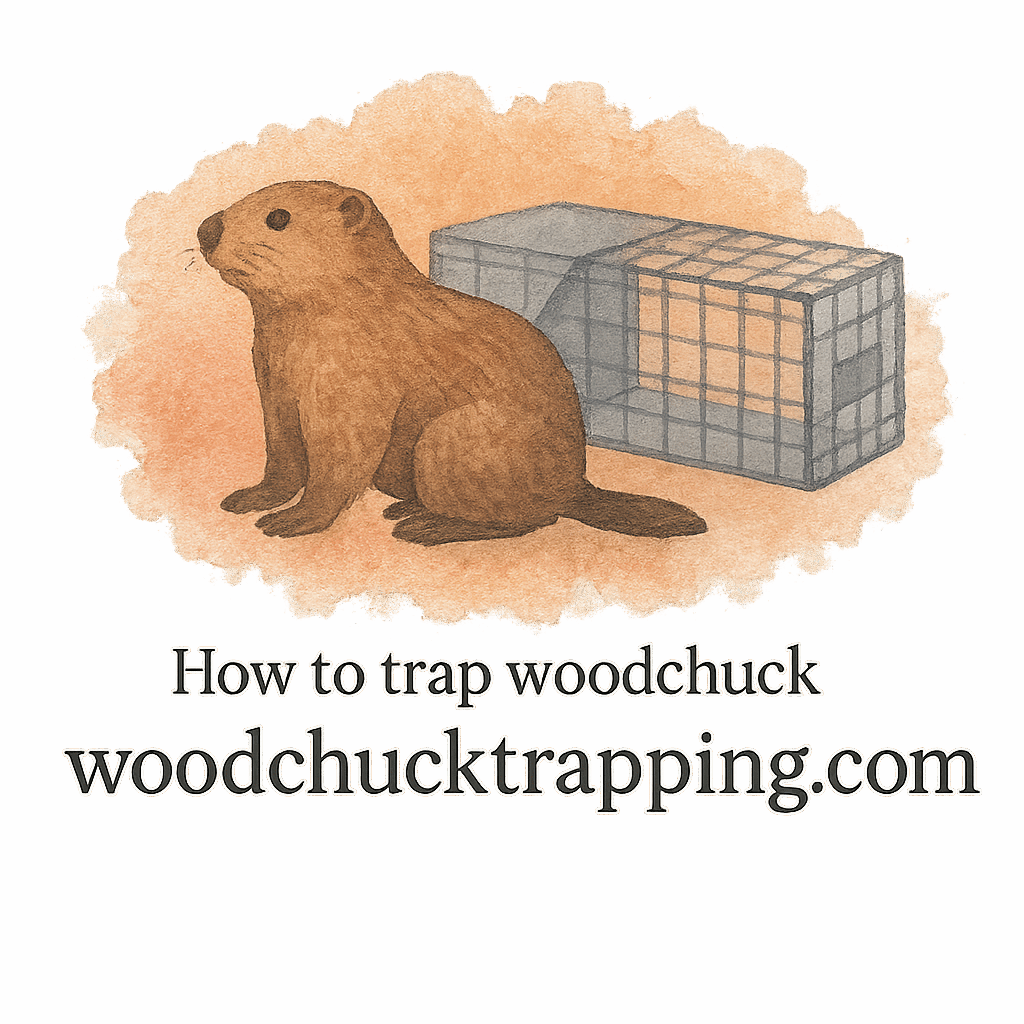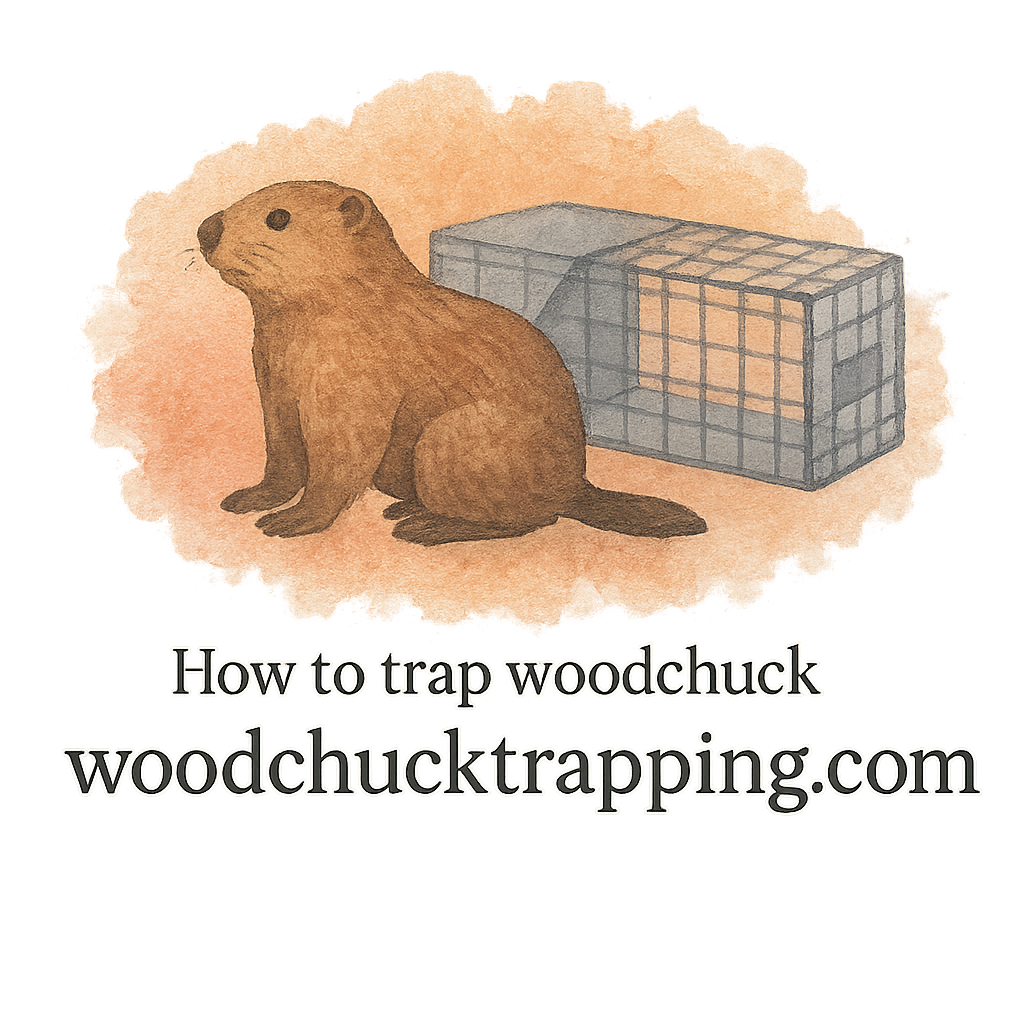Introduction
Woodchucks—also known as groundhogs—might look cute with their chubby cheeks and digging habits, but when they decide your yard is their playground, things can quickly spiral into chaos. From yard damage to ruined gardens, these critters know how to test your patience. That’s why humane woodchuck trapping techniques are essential. In this guide, we’ll dive into the 10 do’s and don’ts of humane trapping, making sure you manage woodchucks responsibly while protecting your property.
Understanding Humane Woodchuck Trapping
Why Humaneness Matters
Humane trapping isn’t just about being kind—it’s about balance. Trapping a woodchuck the wrong way can cause unnecessary suffering, legal issues, or even danger to you. Humane methods ensure both the animal and your property are safe.
Common Misconceptions About Trapping
Many believe traps are cruel or outdated. But modern trapping essentials show that with the right gear, proper baiting, and respect for laws, trapping is one of the most effective and ethical ways to handle a woodchuck infestation.
The 10 Do’s of Humane Woodchuck Trapping
Do Research Local Laws and Safety Rules
Before you set your first trap, check out laws and safety guidelines. Every state has specific rules on when, where, and how you can trap. Breaking these could lead to fines—or worse.
Stay Compliant With Wildlife Regulations
Some areas require permits for relocation. Others restrict trapping during breeding season. Ignorance won’t save you from penalties, so do your homework.
Do Use the Right Equipment
The trap you use makes all the difference. Flimsy cages? Forget it. You’ll want solid, humane trap gear designed for woodchucks.
Choosing Compact Traps for Small Yards
If you’re tight on space, consider compact traps. These are efficient, humane, and perfect for minimal space setups.
Do Learn Proper Baiting and Luring
Woodchucks are picky eaters, but with the right lure, they’ll walk straight into your trap. Dive deeper into baiting and luring methods to master the art.
Selecting the Right Scent Bait
Fresh veggies work, but adding a scent bait doubles your chances of success. Sweet fruits, herbs, or even commercial lures are game-changers.
Do Identify Signs of Infestation Early
Spotting signs like burrows, chewed plants, or dirt mounds early gives you the upper hand. The sooner you act, the easier it is to trap humanely.

Do Place Traps Strategically Near Burrows
Woodchucks love their burrows. Positioning traps at entry points or along their travel paths guarantees more captures.
Do Wear Gloves and Handle With Care
Handling a trap with bare hands leaves a scent. Always wear gloves to mask human odor and avoid bites if you come face-to-face with a trapped animal.
Do Check Traps Frequently
Leaving a woodchuck stuck in a trap for days? Not humane. Check traps at least twice a day. Timely action ensures the animal stays healthy until relocation.
Do Relocate Responsibly and Safely
Releasing woodchucks isn’t just a “drop them anywhere” deal. Choose a safe, suitable location—far from residential areas and with proper cover.
Do Focus on Prevention and Yard Damage Control
Trapping solves today’s problem, but prevention ensures tomorrow stays critter-free. Explore damage prevention strategies like fencing, repellents, and yard maintenance.
Do Educate Yourself on Humane Techniques
Stay updated on modern trapping techniques. New tools, equipment reviews, and expert advice can make trapping more effective and compassionate.
The 10 Don’ts of Humane Woodchuck Trapping
Don’t Ignore Safety Precautions
Never skip safety. Woodchucks may look harmless, but cornered ones can bite or scratch. Always prioritize safety.
Don’t Use Poison or Harmful Chemicals
Poisons are inhumane, illegal in many places, and risky for pets, children, and other wildlife. Stick with proven humane methods.
Don’t Set Traps Without Preparation
Jumping in blindly often leads to failure. Learn how to trap properly before setting up.
Don’t Underestimate Woodchuck Behavior
These animals are smarter than they look. They’ll avoid poorly placed traps or detect reused traps with lingering trap scent.
Don’t Leave a Trapped Animal Unattended
A trapped animal can quickly become stressed or injured if ignored. Frequent checks are a must.
Don’t Trap During Breeding Season
Trapping a mother woodchuck leaves babies to starve. Respect breeding cycles to avoid unnecessary suffering.
Don’t Relocate Without Considering Habitat
Dumping woodchucks anywhere can cause ecological imbalance—or lead them right back to someone else’s garden. Choose locations carefully.
Don’t Reuse Traps Without Cleaning
Woodchucks are sensitive to scent. Failing to wash traps after use can alert them. Always clean your tools and gear.
Don’t Forget the Importance of Trap Scent
Using deodorized traps and masking odors boosts success. Pay attention to subtle details like trap scent.
Don’t Neglect Long-Term Prevention
Trapping solves the immediate issue, but without prevention, another woodchuck may move in. Permanent solutions matter.
Expert Tips for Better Results
Handling Minimal Space Trapping
For small yards, use compact traps and set them close to burrows. Precision beats power in tight spaces.
Choosing the Best Trap Gear
Browse equipment reviews before buying. The right trap gear ensures a smooth, humane experience.
Learning Advanced Trapping Techniques
Once you’ve mastered the basics, experiment with advanced techniques. Sometimes, creativity is the key to success.
Conclusion
Humane woodchuck trapping is all about respect—for the animal, for nature, and for your property. By following these do’s and don’ts, you’ll trap smarter, safer, and more effectively. Remember, prevention is just as important as action, and every humane effort keeps the balance between people and wildlife intact.
FAQs
Q1: What’s the best bait for humane woodchuck trapping?
Fresh veggies like carrots or apples, combined with a good scent bait, usually work best.
Q2: How often should I check my traps?
At least twice a day. A quick check ensures the trapped animal isn’t stressed.
Q3: Are woodchucks dangerous to handle?
Yes, they can bite or scratch. Always use gloves when handling traps.
Q4: Can I trap woodchucks during winter?
It’s less effective since they hibernate. The best time is spring through fall.
Q5: Is relocation always legal?
Not always. Check laws and safety regulations before relocating.
Q6: What if I have a small yard?
Use compact traps and precise placement strategies.
Q7: How do I prevent future woodchuck infestations?
Apply damage prevention measures like fencing, repellents, and regular yard checks.


